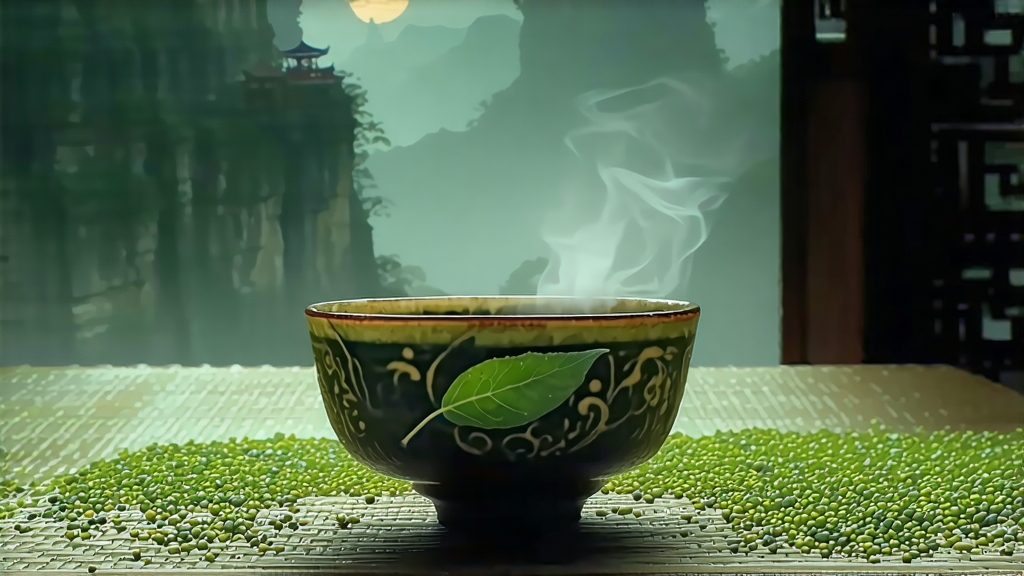
If green tea is the fresh watercolor of Chinese tea art and pu-erh the slow-aged oil painting, then Da Hong Pao sits somewhere between—an ink-wash scroll that reveals new depths with every unfurling. Known in the West as “Big Red Robe,” this most celebrated of Wuyi rock oolongs carries within its twisted, graphite-dark leaves the taste of mineral cliffs, pine smoke, and centuries of imperial lore. To drink it is to sip the geology of northern Fujian’s Wuyi Mountains, where 400-million-year-old granite and tuff have been fractured into a labyrinth of gorges that trap cloud and condense it into mist. That mist feeds the nine original mother trees still clinging to Tianxin Rock, their roots anchored in weathered stone so poor in nitrogen that the bushes produce only a handful of leaves each spring—leaves so coveted that 20 g once sold for over US $30,000 at auction. While those six trees are now protected by UNESCO and the Chinese state, their descendants—cultivated through cuttings rather than seed—carry the same genetic memory and are the source of every authentic Da Hong Pao on the market today.
The name itself is draped in Ming-dynasty legend. One version tells of a scholar on his way to the capital who fell ill in the Wuyi foothills. Monks from the nearby Tianxin Temple brewed an infusion from the bushes on the cliff; the scholar revived, passed the imperial exams top of his list, and returned in vermillion robes to thank the trees by draping his official cloak over them. Another tale speaks of a Ming empress whose incurable illness was eased only by this tea, prompting the emperor to send crimson silk to swathe the four bushes that had supplied the cure. Whatever the truth, the red robe became a symbol of gratitude and imperial favor, and the name stuck.
Da Hong Pao belongs to the “rock oolong” or yancha family, a sub-category of Minbei (northern Fujian) oolong that must, by national standard, be harvested within the 60-km² core scenic zone of the Wuyi range. Here the concept of “rock rhyme” (yanyun) governs quality: a tactile, almost musical minerality that lingers at the back of the throat like the echo of a struck bell. Achieving that resonance demands three non-negotiables: a cultivar pool dominated by the original “Qi Dan” (peculiar cinnabar) clone, the mineral terroir of volcanic tuff, and the slow charcoal roasting that is the signature craft of Wuyi.
Harvest begins in late April when the standard is “open-face” leaves—three or four half-matured leaves with a 4–5 cm stem. Pickers work from 8 a.m. to 1 p.m., avoiding morning dew that would dilute aromatics. Leaves are first withered on bamboo racks set in the shade of the very cliffs that define the tea, allowing a gentle loss of moisture while initiating enzymatic change. The critical “green-making” (zuoqing) follows: alternating bruising in tumble-barrel machines and 45-minute rest periods repeated six to eight times through the night. Oxidation edges toward 40 %—far higher than Taiwanese oolongs—yet is arrested at the moment the leaf rims turn persimmon-red while the centers remain jade. A brief 220 °C bake “kills green,” locking in the hybrid profile that is neither black nor green.
What distinguishes Da Hong Pao from all other oolongs is its three-stage charcoal roast. Traditionally the firing falls to a “tea master of fire” whose family may have tended the same pit for generations. First comes the “water-removal” bake: 100 kg of leaf spread 3 cm thick on linen atop a bamboo tray, suspended 70 cm above a pit of glowing embers from local hardwoods such as Chinese chestnut and ash. Temperature hovers at 85 °C for two hours, driving residual moisture down to 7 %. After a week of rest the same leaf returns for the “first foot” roast, hotter and shorter, followed by a cooler “second foot” weeks later. Each cycle forces aromatic compounds deeper into the cell structure while caramelizing sugars into nutty, orchid-like lactones. The entire process can span three months, during which the tea loses another 15 % of its weight yet gains immeasurable depth.
When the roast master finally judges the leaf ready, it